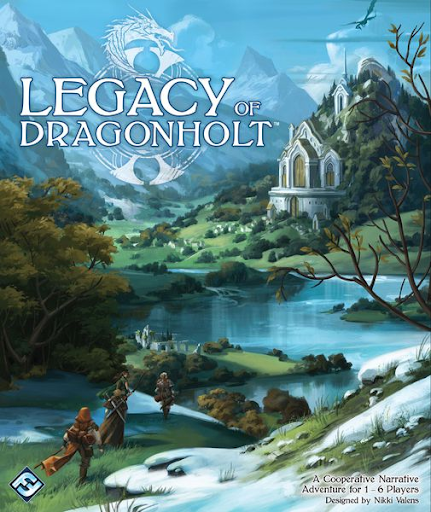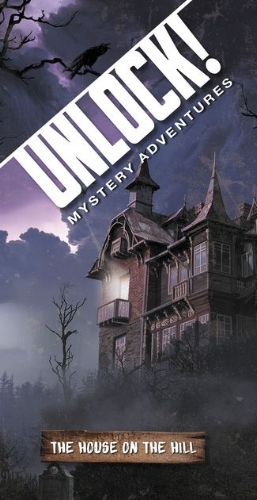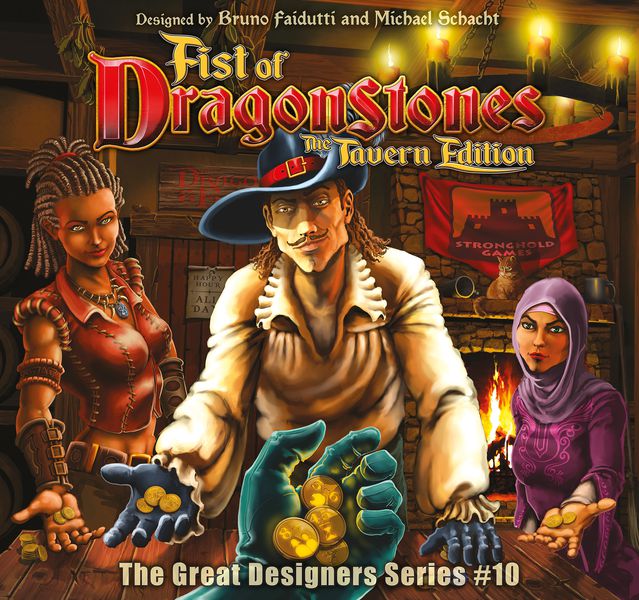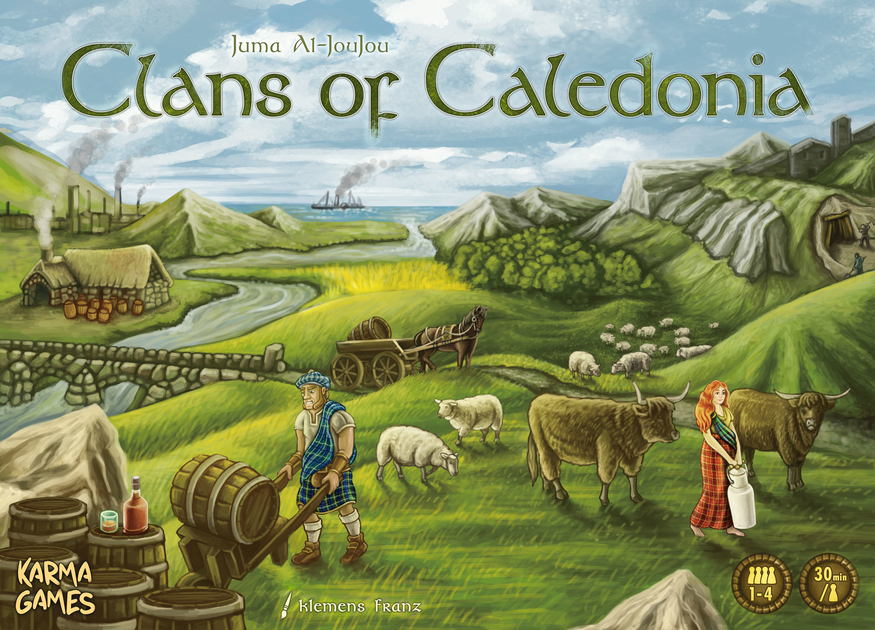Salem 1692 - What do we burn apart from witches? More witches!
Designed by Travis and Holly Hancock
Artwork by Sarah Keele
Published by Facade Games - 2015
4-12 players ~ 20-40 minutes
Review by Josh Simons
The year was 2017 and I was just entering a season of KickStarter overload. No, wait. While that’s true, we need to start our journey in 1692. This is the first year of the infamous Salem witch tryals in Salem, Massachusetts. Accusations are flying in the puritanical night, fueled by subjective spectral evidence and iniquitous behavior. Whether from actual witchcraft, political conspiracy, or plain old-fashioned fear, there’s gonna be a hanging. Or a burning. Or a pressing.
To play or not to play?
Fast forward back to 2017, as I’m considering whether or not to dive into this cardboard world of the witch tryals. The theme fascinated me, however, I realized that slinging accusations of witchcraft may be a bit too macabre to fill out the table for a 4-12 player social deduction game. Honestly, after it came home to my shelf, Salem 1692 sat there for months under a certain shadow of skepticism, largely due to the theme. It’s one thing to squabble over who is or isn’t a werewolf, as werewolves are sort of a general monster trope with a sort of fantastical quality. Witches carry connotations of a deeper darkness. Unchanged by a full moon, but hiding in our midst and acting as mediums to things forbidden. Salem 1692 is much more about ordinary people who have given themselves over to a spirit of fear and turned on each other than any conjuring. In truth, this may reek of the devil’s stench as much as any spellcrafter, but that is a conversation for around the table.
Finally, the opportune time came to learn this game at a big family get together, and now it’s become an oft-requested hit with my family, gamers and non-gamers alike, with players ranging from age 7 to 67. Salem 1692 has simple roles, few rules, and just enough evidence to go on that your accusations are not completely wild-eyed and baseless. Although, playing in the spirit of mass hysteria would not be out of place.
What do we burn apart from witches?
At the beginning of the game, there are a few card decks that you’ll be working with. Each of them are clearly differentiated on the backs of each cards for easy sorting.
First up are the Tryal cards, where each player gets five of them to lay face down on the table, and one of those cards may designate you as a witch. There will be at least one witch in the game.
Secondly, Town Hall cards, which are role cards passed out amongst each of the players, are randomized and dealt to give each each player their own asymmetric advantage.
Where most of the card action is going to happen is from the playing deck, which is made up of a majority of accusation cards, but also includes game modifying cards - which cannot be played on yourself - whose duration is determined by their color.
Finally, there is the Kill card deck, which mirrors the Town Hall deck, and the witches use it to determine who will be killed during the night.
Each player gets a starting hand of three cards from the playing deck before the dawn phase begins. The game can be played with a non-player moderator, but if you’re game savvy you can also function as the Town Crier while playing the game. Basically, this means you close your eyes and moderate from memory. While it can be cumbersome, especially if you’re also a witch, there is not much to remember.
Inconceivable Deductions
Upon waking from the dawn phase, the witches will have placed the revealed black cat card in front of a player. The black cat kicks off the start of the game, signifying the first player. This can be tricksy because the black cat is the only card a player can give themselves. Did the witches just curse one of the townsfolk, or did they fake out the townsfolk with a little self-benefitting self-harm? This is the perfect time to pull out your best Vizzini impression. “Am I telling a lie, or telling the truth, or telling the truth to make you think I’m telling a lie which is actually a lie but really the truth?” Spin your tales and the heads of whoever is not on your team.
On your turn, you can either draw two cards from the player deck or play a minimum of one card from your hand on other players. In loose deduction fashion, you start eyeing the other player for who looks the most shifty, unless you are the most shifty, and drop some accusations or evidence of witchcraft in front of another player. When seven X’s collect in front of a player, the town conducts a tryal.
During a tryal, the player who dropped the last accusation gets to pick one of the accused player’s tryal cards to reveal. Maybe you’ll provide an alibi for another player, or put them in the stocks, or powerfully grant them piety or asylum. Where Salem diverges from other social deduction games is that you become an investigator, making attempts to discern the evidence in front of you that seems to lead to a conclusion that is just out of grasp. Many times, you’ll be going on a hunch, but it’s a well-informed hunch. Unless you’re being completely played by a clever witch. I believe this is a prominent aspect that makes it shine for everyone who I have played with.
This dance continues until the conspiracy card is drawn, which was shuffled into the player deck at the beginning of the dawn. The player who drew the conspiracy gets to choose one of the black cat players’ tryal cards to reveal. Then, each player takes one facedown tryal card from the player on their left, allowing the witches influence to spread. This can really tilt the game, because once you become a witch you remain a witch, even if you lose that witch card during a conspiracy.
Once all five of a players Not A Witch tryal cards have been revealed, or their Witch tryal card is revealed, they are dead and out of the game. A sly witch who passed on their card will look like an innocent. On the other hand, perhaps the townsfolk really did kill an innocent.
The final card in the draw deck is the night card. This resets the round, where the deck is shuffled again, with some new actions taking place. First, all witches open their eyes and decide to which of the remaining players they will kill, and place the Kill card that matches their Town Hall card facedown on top of the deck for an upcoming thematic reveal. Strategically, the witches may choose to kill one of their own if that seems like viable deceptive play. It’s win or lose as a team around here. The third type of Tryal card, which there is only one of and we haven’t talked about yet, comes into play now. The Constable, as long as his tryal card hasn’t been revealed by accusations, places a gavel token on one player to be protected from death during the night. Once all players open their eyes, they have to opportunity to confess by revealing one of their tryal cards, hastening their own demise, to protect themselves from the witches kill decision. The players have the length of a sand timer (included with the game) to make their decision. The Kill card is revealed. Depending on each player’s actions, the witch hunt goes on.
The rounds continue in this fashion until either all non-witches have been killed, all players have become witches, or all witch cards have been revealed.
Throw the Book at Them
I’d be remiss not to talk about the production of this game. Sarah Keele’s artwork is gorgeous, and honestly, that lone portrait of Mary Warren (as featured on the cover of the rulebook) is what drew me to the game to begin with. The cards, the hourglass, and the gavel token all fit finely inside a faux book box complete with gold foil embossing and a magnetic closure to keep the components from tumbling all out while the game is on its way from shelf to table. Though if you were to sleeve your cards, I’m not certain the magnet would keep the book clasped closed.
As somewhat of a meta aspect, Salem 1692 is the second edition of the game. Originally released as Salem, the game was rebranded as Salem 1692 to integrate it into Facade Games’ Dark Cities line, entry being Vol. 0. The other games in the series, Tortuga 1667 and Deadwood 1876, both have similar faux book boxes designed to be flawlessly displayed on your bookshelf together as a set.
The rulebook really adds a nice touch of personality, thematically addressing different situations that can come up in a game. Each card is explained, and each character is described, but hidden in the middle are The 5 Laws of Salem. These are a great way to start any game, as the laws lay out topics like if you’re taking too long, other players can flip the hourglass on you and force your hand. If your hand leaves a card once you’ve played it but forgot to use your special ability… too bad! Dead players who speak shall be shunned. Deduction games seem to play better when the players can get into their characters and role play a little bit, but Salem 1692 edges you into that with some rulebook sass.
Weighing the Scales
I enjoy social deduction games. Not that I’m great at them, really. I always end up thinking that I’m coming up with some airtight strategy that will fool the other players, but they end up seeing right through it. With Salem 1692, I like that there are actually shadows and movements that bring other players into suspicion. Someone being handed piety will make you question their alliances, whether they are a witch, a townsfolk, or one pretending to be the other. The tension builds over the day phases, but the game usually does not drag on. It plays to an appropriately satisfying length, not overstaying its welcome. Fortunately, this helps balance out the players who have been eliminated beyond whoever is now taking over the role as the moderator. Really, it’s still enjoyable to watch the game play out from the sidelines.
Whether you want to go for something spooky or remember history so it’s not repeated, Facade Games gives you material to work with. Post game, I’ve found it sobering to open the rulebook and read to the group the short history of each character we played as. Were they the first girl to accuse or be accused in Salem? Were they a ringleader to the accusations? Were they found guilty and killed?
Similar to zombies or vampires or any other horror theme, witch tryals is not going to be up everyone’s alley. For the people that I play with, the fun of the game overcame their reluctance towards the theme. If you’re looking for a game that can accommodate a large group of players, that is accessible to wide mix of players game experience, and also takes up a small amount of real estate on your ever crowding shelf, Salem 1692 is a worthy addition to your library.
Josh Simons is a freelance writer and contributor to The Cardboard Herald. You can follow Josh and his creative projects on twitter, @oldroadcreative.
The Cardboard Herald is funded by the generous support of readers, listeners, and viewers. If you'd like to help support, you can find our Patreon here.


































